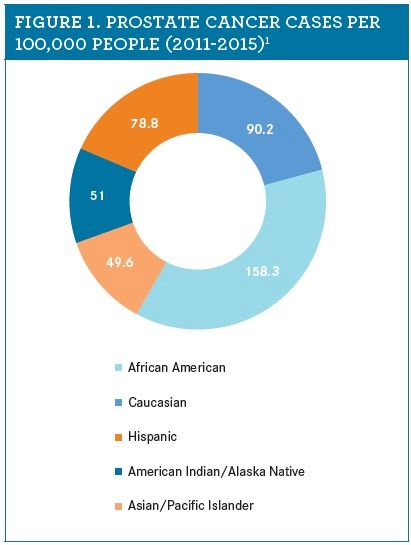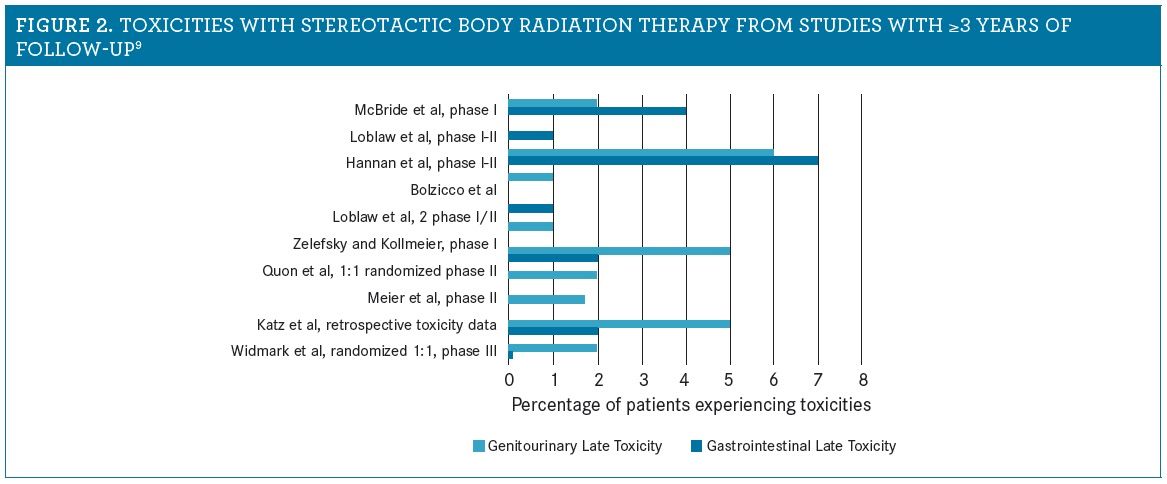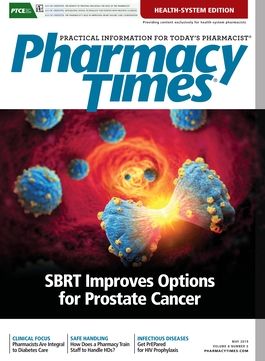Publication
Article
Pharmacy Practice in Focus: Health Systems
SBRT Improves Options for Prostate Cancer
Author(s):
For some patients, stereotactic body radiation therapy may provide an enhanced quality of life, better efficacy, and reduced adverse effects.
Prostate cancer is one of the leading types of cancer seen in men in the United States and is the second-leading cause of cancer-related deaths, according to the CDC. Data show that in 2015, 183,000 new cases of prostate cancer were reported and 29,000 men died from the disease in the United States alone.
This equates to about 99 new case reports and 19 deaths due to prostate cancer per 100,000 men in the United States every year.1 Investigators are constantly looking for new treatments that afford better safety and efficacy than the available options, such as brachytherapy, chemotherapy, hormonal therapy, immunotherapy, and surgery. Recently, a new treatment modality for those with a prostate cancer diagnosis, stereotactic body radiation therapy (SBRT), joined the treatment algorithm and is thought to provide improved patient outcomes with reduced adverse effects (AEs).
Prostate cancer tends to affect older men. Although it can be diagnosed at a fairly young age, about 60% of diagnoses are in those 65 years or older.2 Reported cases of prostate cancer show that most men with the cancer are African American, followed by Caucasian and Latino men (figure 1).1

NEW ON THE HORIZON
Depending on the aggressiveness, risk stratification, and severity of the tumor, treatment may involve one of several modalities, ranging from close monitoring with active surveillance to radiotherapy with androgen deprivation.3 The standard of care in patients with intermediate- or low-risk localized prostate cancer is external beam radiation therapy (EBRT) with conventional fractionation, which delivers 180 to 200 cGy per fraction and may require as many as 5 treatments per week for up to 8 weeks.4 Since its debut, radiation therapy has evolved, leading to therapeutic alternatives in the form of moderate hypofractionation and ultra-hypofractionation, delivering 240 to 340 cGy and ≥500 cGy per fraction, respectively.4 Using image-guided radiation therapy, moderate and ultra-hypofractionation administer high-precision radiation at larger doses per fraction, thus reducing the duration of therapy, the number of treatments per week, and patient burden.4 Introduced in the 2018 American Society of Clinical Oncology, American Society for Radiation Oncology, and American Urological Association guidelines for hypofractionated radiation therapy for localized prostate cancer, ultra-hypofractionation with SBRT may serve as a potential therapeutic option for patients with intermediate- or low-risk localized prostate cancer.5 However, with only moderate quality evidence, this recommendation remains conditional, and clinicians should use the therapy after complete a risk—benefit analysis, including the patient as part of the discussion.4
EFFECTIVENESS AND SAFETY
Treatments can cause AEs that some patients find unacceptable. The most common with radiation treatments among men with prostate cancer have been acute and late gastrointestinal (GI) toxicity and/or acute and late genitourinary toxicity.
Acute toxicities occur during or shortly after therapy begins, whereas late toxicities occur 3 months after therapy ends. The 10-year cumulative incidence of genitourinary toxicity has been reported at 20.1% to 27.8% and included erectile dysfunction, hematuria, symptomatic radiation urethritis, and urinary incontinence.6 GI toxicities have been reported in 2% to 16% of patients, depending on the type of EBRT received7 and include increased urinary frequency and urgency, loose stools, and rectal bleeding.8 Most of these complications dissipate over time, but high numbers of patients report a diminished quality of life because of the persistent AEs after EBRT. SBRT may be a viable option to limit these AEs, as evidence from a recent review of ongoing studies using SBRT showed a decreased incidence of both late GI and genitourinary toxicities, ranging from 0.6% to 7.0% for GI toxicity and up to 6.0% for genitourinary toxicity (figure 2).9

This same review produced evidence of a biochemical relapse-free survival rate greater than 80%, depending on the amount of follow-up completed by each study at the time of the review.9 Biochemical relapse-free survival indicates that patients have not had any serum prostate-specific antigen elevations since treatment. Although these rates are promising, no head-to-head comparisons between radiation therapies have been completed to show superiority of SBRT over other options. More research is needed to effectively compare its efficacy with current practices.
CONCLUSION
Evidence supporting the use of SBRT in intermediate- and low-risk localized prostate cancer is limited because of a lack of follow-up and the absence of randomized controlled trials involving men with prostate cancer.3 Although investigators are making progress with new treatment algorithms for prostate cancer, clinicians must continue to critically evaluate the treatment options available and participate in shared decision making with their patients when developing a therapeutic plan. For some patients, SBRT has the potential to provide an enhanced quality of life, improved efficacy, and reduced AEs.
Jerry A. Barbee Jr, PharmD, BCPS, CPh, and Glenn Schulman, PharmD, MS, BCPS, BCACP, BCGP, BCIDP, are clinical pharmacists in Pensacola, Florida.
Meagan Balding and D. Garrett Smith are PharmD candidates at the University of Florida in Gainesville.
REFERENCES
- United States cancer statistics: data visualizations. CDC website. cdc.gov/ cancer/dataviz. Published June 2018. Accessed April 8, 2019.
- Prostate cancer survival rates. Prostate Cancer Foundation website. pcf.org/ about-prostate-cancer/what-is-prostate-cancer/prostate-cancer-survival-rates/. Published 2019. Accessed April 8, 2019.
- Moon DH, Efstathiou JA, Chen RC. What is the best way to radiate the prostate in 2016? Urol Oncol. 2017;35(2):59-68. doi: 10.1016/j.urolonc.2016.06.002.
- Morgan SC, Hoffman K, Loblaw DA, et al. Hypofractionated radiation therapy for localized prostate cancer: executive summary of an ASTRO, ASCO, and AUA evidence-based guideline. Pract Radiat Oncol. 2018;8(6):354-360. doi: 10.1016/j.prro.2018.08.002.
- Morgan SC, Hoffman K, Loblaw DA, et al. Hypofractionated radiation therapy for localized prostate cancer: an ASTRO, ASCO, and AUA evidence-based guideline [published online October 9, 2018]. J Urol. doi:10.1016/j. juro.2018.10.001.
- Kim S, Moore DF, Shih W, et al. Severe genitourinary toxicity following radiation therapy for prostate cancer—how long does it last? J Urol. 2013;189(1):116-121. doi: 10.1016/j.juro.2012.08.091.
- Jereczek-Fossa, BA, Maucieri A, Marvaso G, et al. Impact of image guidance on toxicity and tumour outcome in moderately hypofractionated external-beam radiotherapy for prostate cancer. Med Oncol. 2018;36(1):9. doi: 10.1007/ s12032-018-1233-1.
- D’Avino V, Palma G, Liuzzi R, et al. Prediction of gastrointestinal toxicity after external beam radiotherapy for localized prostate cancer. Radiat Oncol. 2015;10:80. doi: 10.1186/s13014-015-0389-5.
- Kothari G, Loblaw A, Tree AC, et al. Stereotactic body radiotherapy for primary prostate cancer. Technol Cancer Res Treat. 2018;17:1533033818789633. doi: 10.1177/1533033818789633.
Newsletter
Stay informed on drug updates, treatment guidelines, and pharmacy practice trends—subscribe to Pharmacy Times for weekly clinical insights.






